Find aDomain Search Powered byGoDaddy.com ...
Your target market will depend on your product. Once you have determined who is most likely to buy and rely on your product, you can target your marketing to that group.
We earn commissions if you shop through the links below. Read more
Written by: Carolyn Young
Carolyn Young has over 25 years of experience in business in various roles, including bank management, marketing management, and business education.
Edited by: Howard Tillerman
Published on November 18, 2021
Updated on June 16, 2023
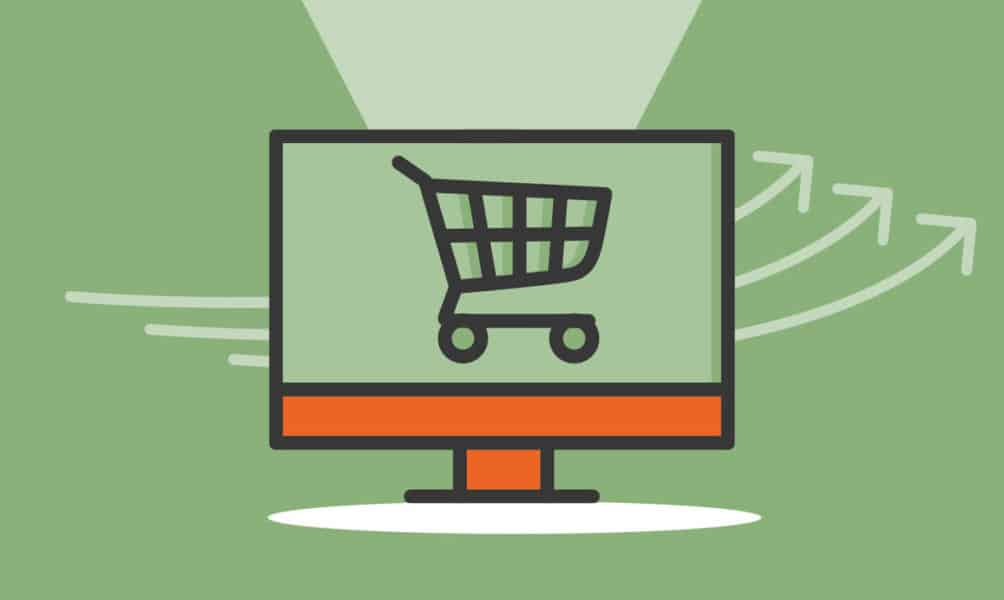
Investment range
$2,200 - $7,500
Revenue potential
$73,000 - $365,000 p.a.
Time to build
0-3 Months
Profit potential
$23,800 - $138,800 p.a.
Industry trend
Growing
Commitment
Flexible
We all make online purchases, and these days more than ever — that’s why ecommerce is big business, generating trillions of dollars in revenue each year. If you have an intriguing idea for a new product or service, one of the best ways to offer it to the world is via the internet.
Building a successful ecommerce business may seem overwhelming at first, and there’s little doubt that achieving your vision will require patience, determination, and hard work.
But the reality is that countless entrepreneurs have launched successful online businesses, and none of them did it by snapping their fingers. They did it step by step.
The key is to gain as much knowledge as possible before you start, helping you avoid the most common missteps and move through the process as smoothly as possible. You’ve come to the right place, as this article details each of the 13 steps you will take to develop and launch your online business.

Starting an ecommerce business requires a great deal of time and effort, not to mention financing. Before you dive in, you need to fully understand what is involved. Launching your own business represents a great risk, so educating yourself beforehand is a must.
Every business presents positives and negatives, which you should carefully weigh before making a decision. Here are some basic pros and cons of starting and running an ecommerce business.
Ecommerce sales in the US have been increasing since the late 1990s, when the Dot Com boom brought the value past $1 billion, according to market information researcher IBISWorld.
Setting aside the pandemic, ecommerce will continue to grow as more people around the world gain reliable internet access. Mobile commerce is growing as well, thanks to increased use of mobile devices, further expanding the ecommerce market.
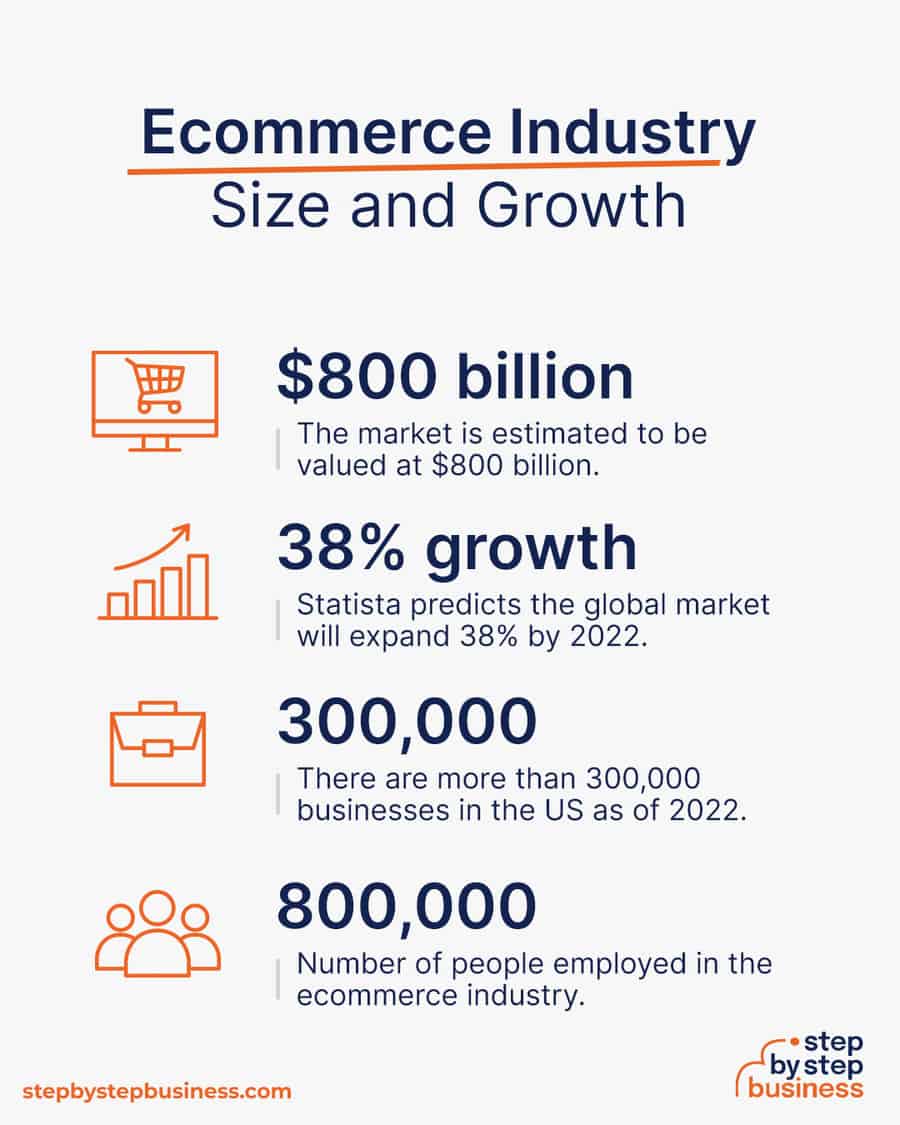
Trends in the ecommerce industry include:
The industry faces some challenges like:
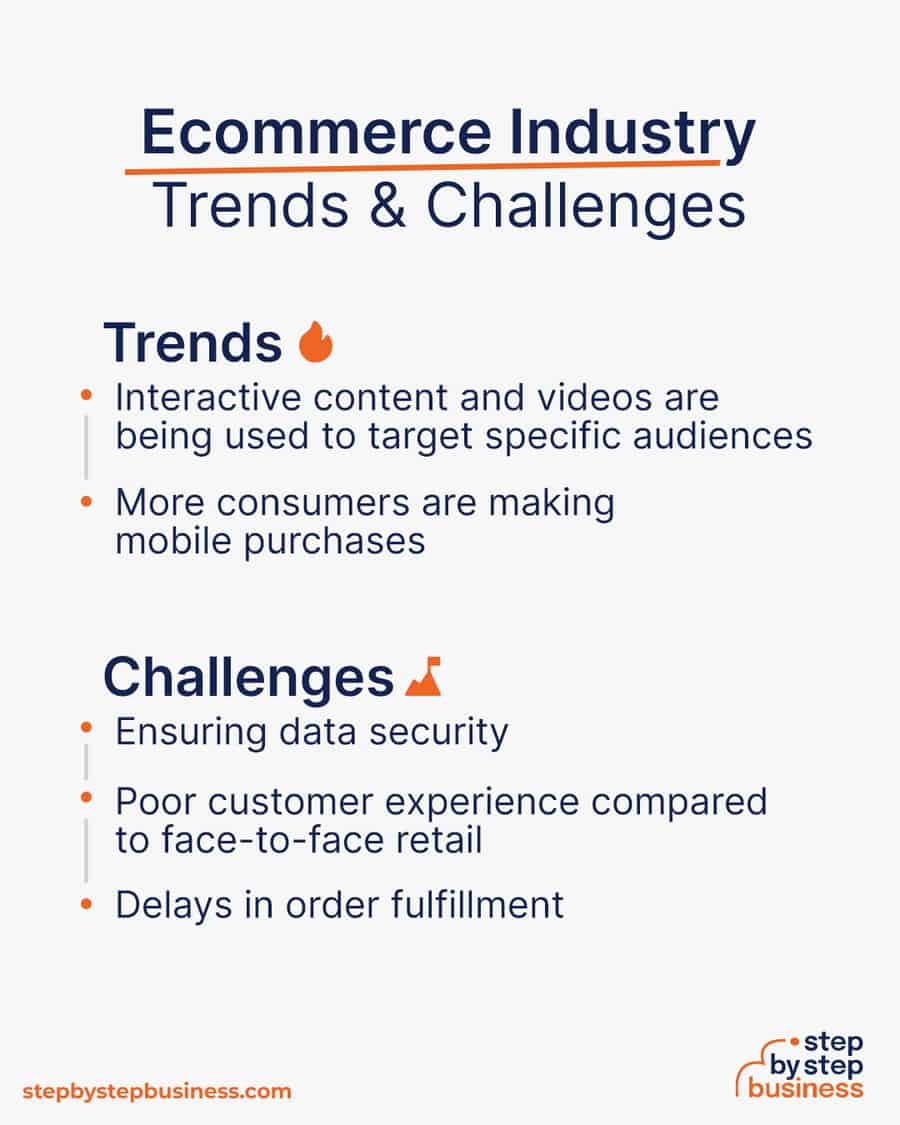
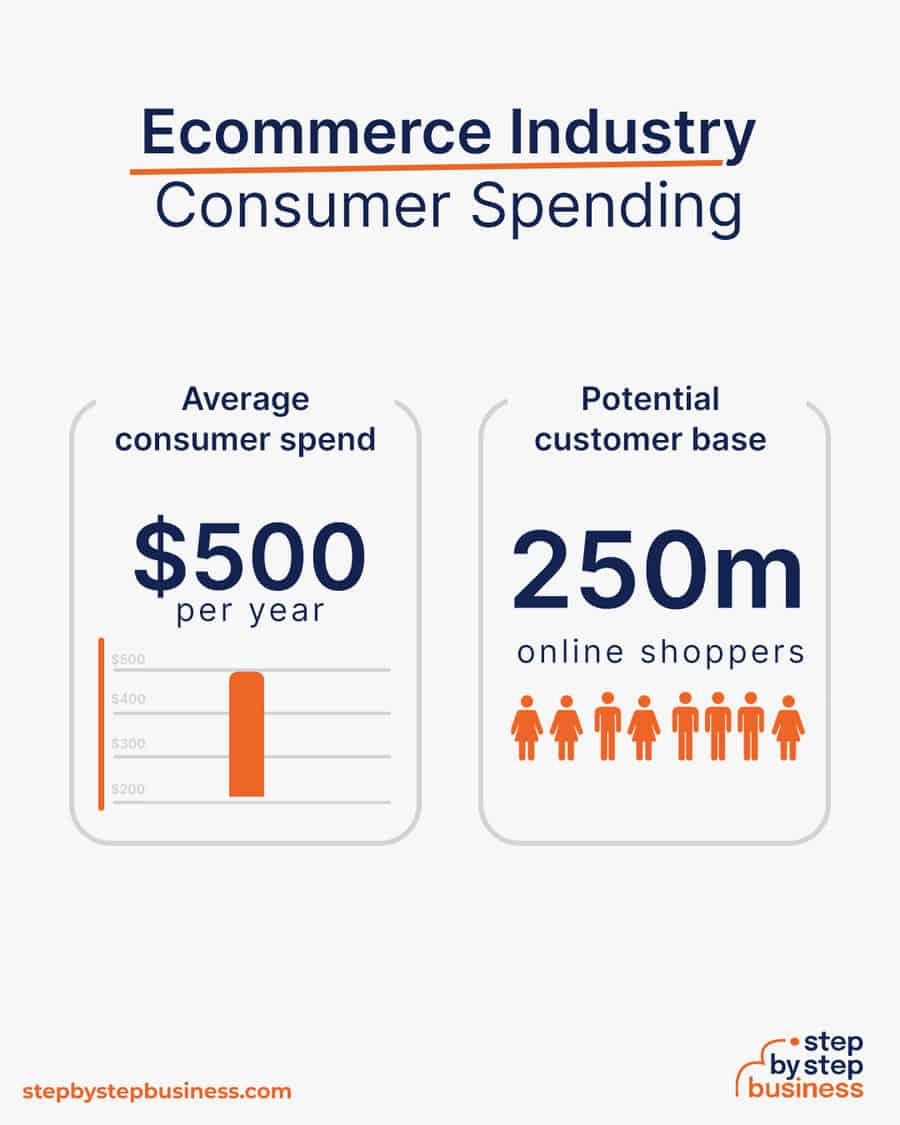
Ecommerce specialists are tasked to increase a company’s conversion rate and sales.
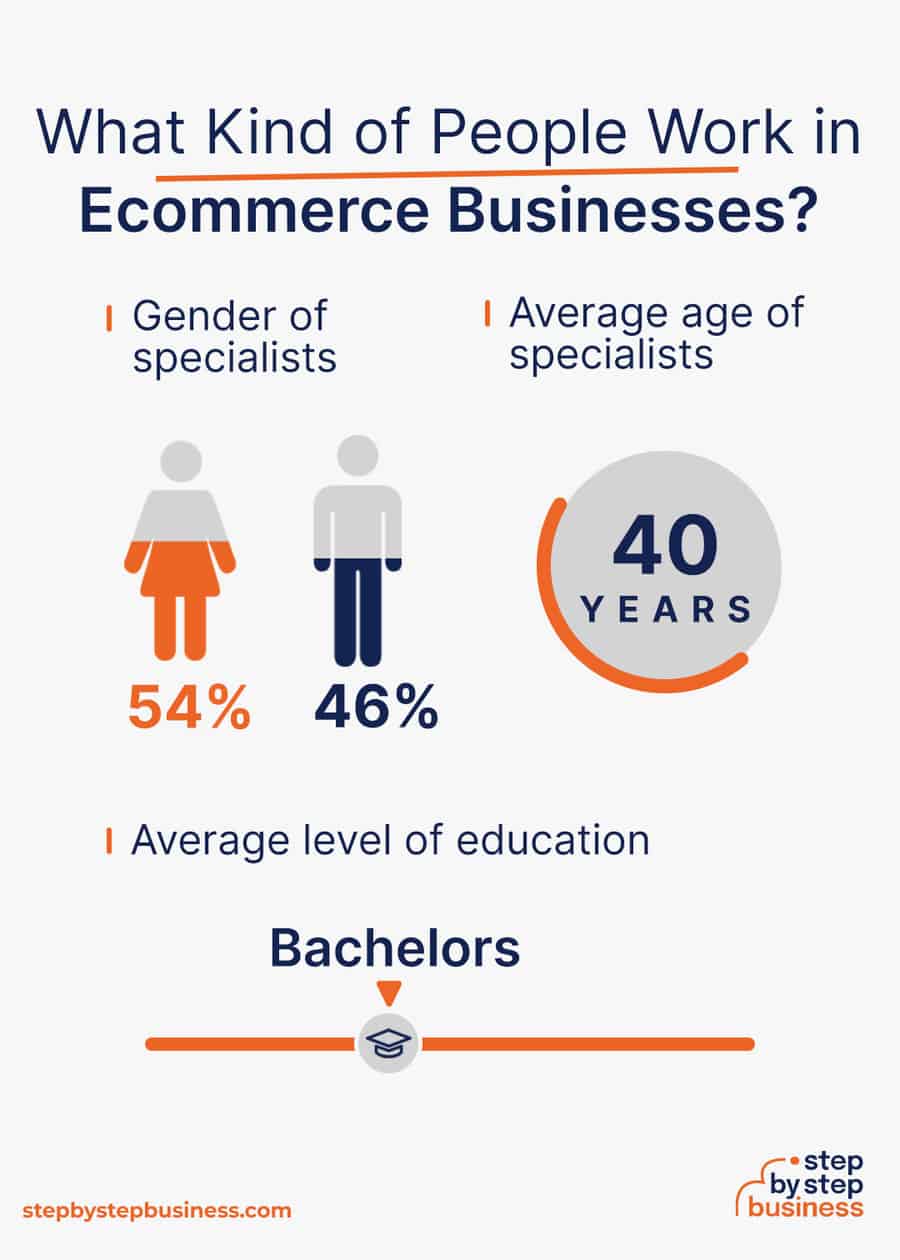
The start-up costs for an ecommerce business range from $2,200 to $7,500, according to Step By Step Research, with the website usually being the largest investment. You could reduce expenses significantly by starting your business on an online marketplace like Amazon and gaining some recognition before launching your own online shop.
| Start-up Costs | Ballpark Range | Average |
|---|---|---|
| Setting up a business name and corporation | $200 - $200 | $200 |
| Business licenses and permits | $200 - $300 | $250 |
| Insurance | $100-$500 | $300 |
| Website setup with online purchasing capabilities | $1,000 - $5,000 | $3,000 |
| Initial Marketing Budget | $200 - $500 | $350 |
| Initial Inventory | $500 - $1,000 | $750 |
| Total | $2,200 - $7,500 | $4,850 |
Your profit will vary depending on:
The average gross profit margin for an online retail business is 40%, with the primary expenses being website hosting, insurance, and marketing.
When you launch, if you can sell $200 in products per day, revenue for the first year will be $73,000 and gross profit, as per the 40% average, will be $29,200. Assuming no employees, your monthly expenses may be around $450, leaving you with a net profit of $23,800.
As your brand gains recognition, you’ll generate more traffic and repeat customers, potentially leading to $1,000 in daily sales. This would result in $365,000 in annual revenue, and $146,000 in gross profit. Putting monthly expenses at $600, your net profit would be $138,800. Not a bad year at all.
For a successful site, the profit potential is limitless!
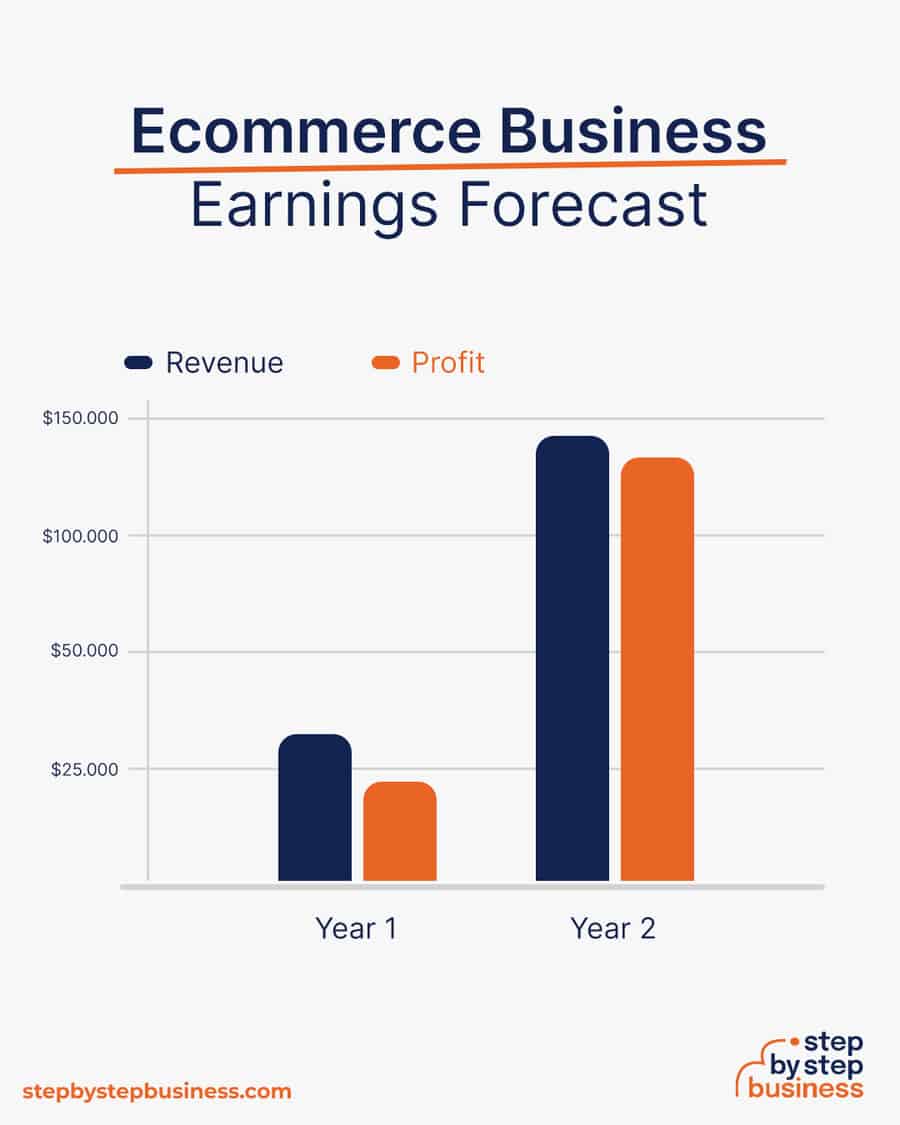
Ecommerce presents few barriers to entry. Your biggest challenges will be:

Now that you know what is involved in starting an ecommerce business, it’s time to further develop your idea in preparation to enter a competitive marketplace.
Since you have no track record in ecommerce, you will need to differentiate your product in order to stand out from the competition. A good first step is to determine what advantages over similar products your product provides.
Next, stress those advantages in your marketing. Perhaps your product is of higher quality, lower priced, or more powerful; whatever the case may be, your value proposition should reflect this.
You might start your initial marketing campaign by creating a page for your business on all the leading social media platforms, then sharing your newly launched website across those platforms — and asking your friends and family to share as well.
You probably have a product or product line in mind, but you should also consider what related products you might offer. When Amazon first launched it just sold books. Music and videos appeared four years later, and just about everything else has followed.
Your ecommerce site may also be able to offer a collection of related products, which could significantly increase your average price per sale. Set aside some time to think about it and make a list of all the products even remotely related to your main product, then go through the list and determine which might be a good fit for your site.
Prices are dependent on the type of product being sold and how it’s positioned. You might use a value-based strategy, in which your good has a lower price point than similar products. Or you might use a perceived value strategy and market your product as being worth more than similar products.
To get started, research ecommerce firms with products similar to yours to see what prices they charge, and why.
Your target market will depend on your product. Once you have determined who is most likely to buy and rely on your product, you can target your marketing to that group.
For example, if your product is shoes targeting a younger audience, you can create content for your site targeted to those people. You can also advertise on social media sites that are more popular with younger people, like Instagram and TikTok, and frame your messaging for youth.
In the early stages of business development, operating from home is often the wisest move, as it helps keep costs low and, hopefully, it’s a place where you feel comfortable. Once your business expands, you’ll likely hire workers and might then need an office.
When choosing an office, use these three rules of thumb:
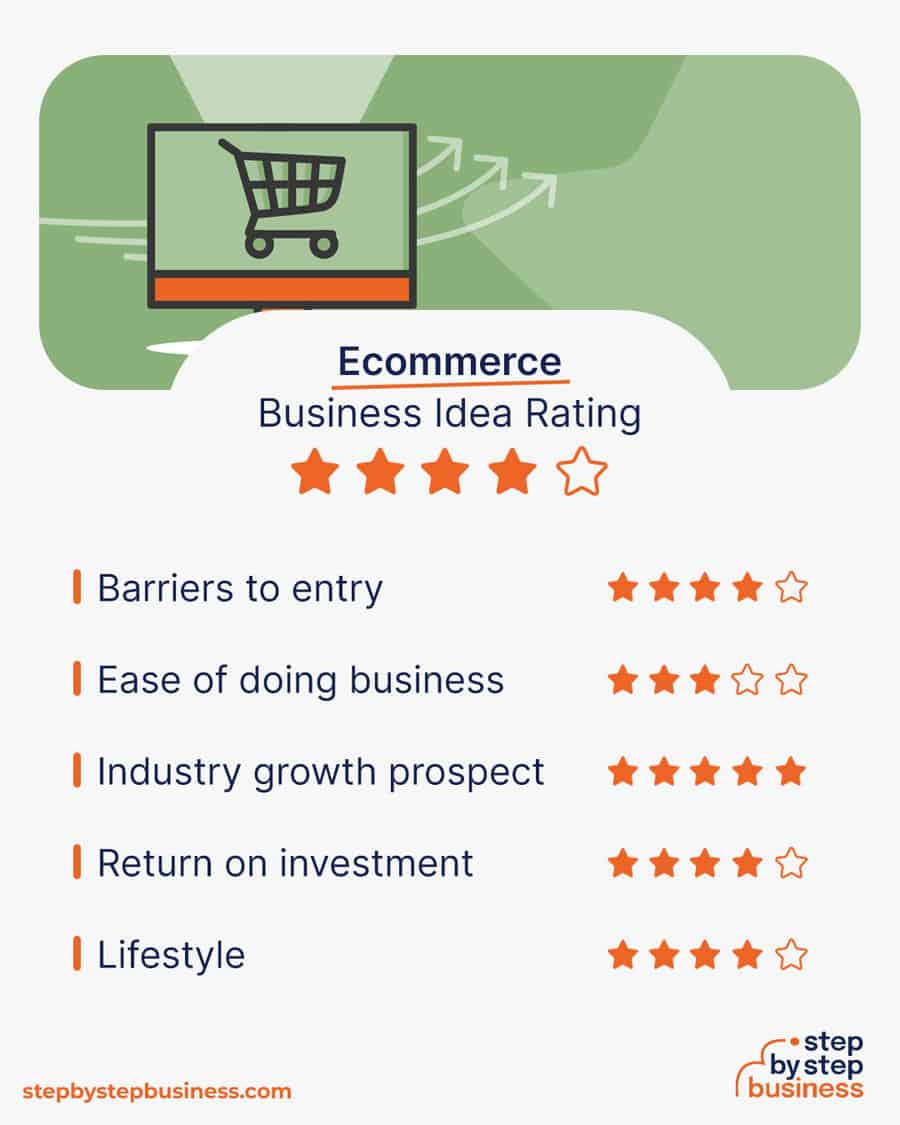

Your business name is your business identity, so choose one that encapsulates your objectives, services, and mission in just a few words. You probably want a name that is short and easy to remember — think of Zoom, Google, Amazon, Uber — since much of your business, and your initial business in particular, will come from word-of-mouth referrals.
Here are some suggestions for brainstorming your business name:
Once you’ve got a list of potential names, visit the website of the US Patent and Trademark Office to make sure they are available for registration and check the availability of related domain names using our Domain Name Search tool. Using “.com” or “.org” sharply increases credibility, so it’s best to focus on these.
Finally, make your choice among the names that pass this screening and go ahead with domain registration and social media account creation. Your business name is one of the key differentiators that set your business apart. Once you pick your company name, and start with the branding, it is hard to change the business name. Therefore, it’s important to carefully consider your choice before you start a business entity.
Every business needs a plan, a rough outline that helps guide the startup through the launch process while maintaining focus on key goals. A business plan is also crucial for helping potential partners and investors understand your company and vision before they invest:
If you’ve never created a business plan, it can be an intimidating task. You might consider hiring a business plan specialist at Fiverr to create a top-notch business plan for you.

Registering your business is an absolutely crucial step — a prerequisite to paying taxes, raising capital, opening a business bank account, and other guideposts on the road to getting a business up and running.
Registration is also exciting because it makes the entire process feel official! Once it’s done, you officially have your own business.
Your business location is important because it can affect taxes, legal requirements, and revenue. Most people will register their business in the state where they live, but if you are planning to expand, you might consider looking elsewhere, as some states could offer real advantages when it comes to ecommerce.
If you’re willing to move, you could really maximize your business! Keep in mind, it’s relatively easy to transfer your business to another state.
Businesses come in several varieties, each with its pros and cons. The legal structure you choose for your ecommerce business shapes your taxes, personal liability, and business registration requirements, so it’s important to choose wisely.
Here are the four main options:
We recommend that new business owners choose LLC as it offers liability protection and pass-through taxation while being simpler to form than a corporation. You can form an LLC in as little as five minutes using ZenBusiness’s online LLC formation service. They will check that your business name is available before filing, submit your articles of organization, and answer any questions you might have.

The final step before you’re able to pay taxes is getting an Employer Identification Number, or EIN. You can file for your EIN online, by mail, or by fax: visit the IRS website to learn more.
Once you have your EIN, you’ll need to choose your tax year. Financially speaking, your business will operate on a calendar year (January–December), or a fiscal year, a 12-month period that can start in any month. This will determine your tax cycle, while your business structure will determine what taxes you’ll pay.
The IRS website also offers a tax-payers checklist, and taxes can be filed online.
It is important to consult an accountant or other professional to help you with your taxes to ensure you are completing them correctly.
Securing funds to support your business through its launch process and beyond is the next key step, and it can be done in a variety of ways.
Bank and SBA loans are probably the best options, other than friends and family, for funding an ecommerce business. You might also try crowdfunding if you have an innovative concept.


Starting an ecommerce business requires obtaining several licenses and permits from local, state, and federal governments.
Federal regulations, licenses, and permits associated with starting your business include doing business as (DBA), health licenses and permits from the Occupational Safety and Health Administration (OSHA), trademarks, copyrights, patents, and other intellectual properties, as well as industry-specific licenses and permits.
You may also need state-level and local county or city-based licenses and permits. The license requirements and how to obtain them vary, so check the websites of your state, city, and county governments or contact the appropriate person to learn more.
You could also check this SBA guide for your state’s requirements, but we recommend using MyCorporation’s Business License Compliance Package. They will research the exact forms you need for your business and state and provide them to ensure you’re fully compliant.
This is not a step to be taken lightly, as failing to comply with legal requirements can result in hefty penalties.
If you feel overwhelmed by this step or don’t know how to begin, it might be a good idea to hire a professional to help you check all the legal boxes.
Before you start making money, you’ll need a place to keep it, and that requires opening a bank account.
Keeping your business finances separate from your personal bank account makes it easier to track your company’s performance and file taxes and a profit, so it’s worth doing even if you’re running your business as a sole proprietorship. Opening a business bank account is quite simple, and similar to opening a personal one. Most major banks offer business account options, just inquire at your preferred bank to learn about rates and features.
It’s a good idea to look at a few options, as banks vary quite a bit in what they offer, and you want the rates that are best for you and your business. Once you choose your bank, you just need to bring your EIN (or Social Security Number if you decide on a sole proprietorship) and your articles of incorporation or other legal documentation that proves your business is registered.
Business insurance is an area that often gets overlooked but is vital to your success as an entrepreneur. Insurance protects you from unexpected events that can have a devastating effect on your life and business.
Here are some of the different types of insurance to consider:


As opening day nears, prepare for launch by reviewing and perfecting some key elements of your business.
Being an entrepreneur often means wearing many hats, from marketing to sales to accounting, which can be overwhelming. Fortunately, a number of excellent software programs and digital tools can help you with many business tasks.
You may want to use industry-specific software, such as Shopify, BigCommerce, and PinnacleCart.
Your business will come from online visitors, but you should still invest in digital marketing! Getting the word out is especially important for new businesses, as it’ll boost customer and brand awareness.
Once your website is up and running, link it to your social media accounts and vice versa. Social media is a great tool for promoting your business because you can create engaging posts that advertise your products:
Take advantage of your website, social media presence, and real-life activities to increase awareness of your offerings and build your brand. Some suggestions include:
Ecommerce website development is crucial because your site is your online presence and needs to convince prospective clients of your expertise and professionalism. They are unlikely to find your website, however, unless you follow Search Engine Optimization (SEO) practices. These are steps that help pages rank higher in the results of top search engines like Google.
You can create your own website using services like WordPress, Wix, or Squarespace. This route is very affordable, but figuring out how to build a website can be time-consuming. If you lack tech-savvy, you can hire a web designer or developer to create a custom website for your business.
Unique selling propositions, or USPs, are the characteristics of a product or service that set it apart from the competition. Customers today are inundated with buying options, so you’ll have a real advantage if they are able to quickly grasp how your ecommerce business meets their needs or wishes. It’s wise to do all you can to ensure your USPs stand out on your website and in your marketing and promotional materials, stimulating buyer desire.
Do all you can to ensure your USPs stand out on your website and in all your marketing and promotional materials, stimulating buyer desire.

You may not like to network or use personal connections for business gain. But your personal and professional networks likely offer considerable untapped business potential. Maybe that Facebook friend you met in college is now running an ecommerce business, or a LinkedIn contact of yours is connected to dozens of potential clients. Maybe your cousin or neighbor has been working in ecommerce for years and can offer invaluable insight and industry connections.
The possibilities are endless, so it’s a good idea to review your personal and professional networks and reach out to those with possible links to or interest in ecommerce. You’ll probably generate new customers or find companies with which you could establish a partnership. Online businesses might also consider affiliate marketing as a way to build relationships with potential partners and boost business.

If you’re starting small from a home office, you may not need to hire any employees. But as your business grows, you will likely need workers to fill various roles. Potential positions for an ecommerce business include:
Your business may in the future need to hire all of these positions, or just one or two of them, depending upon its size and needs. You might also hire multiple workers for a single role, or a single worker for multiple roles, again depending on your needs.
Free-of-charge methods to recruit employees include publishing a job post on social media platforms such as LinkedIn and Facebook groups, or using free classified sites like Jobs and AngelList. You might also use a premium recruitment option, such as advertising on Indeed, Glassdoor, or ZipRecruiter. Finally, you could hire a recruitment agency to help you find talent.

Ecommerce is a massive market that is predicted to grow much faster. You can still get in on the action by starting your ecommerce business now. But first, you might want to consider creating a niche market by specializing in a certain type of product, like 100-year-old books or top-shelf tracksuits. An intriguing niche market can often jumpstart an efficient marketing and sales campaign.
It’s important to keep yourself updated with the latest trends, such as curated shopping and social commerce. Now that you know how to start an ecommerce business, you should be on your way to success!3z
All you need is a computer, shipping supplies, and a product to sell. You can conduct all your operations from home until you outgrow your space, or retire to your private island.
Ecommerce can be very profitable. In just the first few years, an ecommerce business can make $100,000 or more in profits.
Start-up costs are relatively low, averaging around $5,000. You can save up money to launch your business by first selling via an online marketplace, like Amazon or Etsy.

Published on August 16, 2023
Find aDomain Search Powered byGoDaddy.com ...
Read Now

Published on March 16, 2023
Lorem ipsum dolor sit amet, consectetur adipiscing elit, sed do eiusmod tempor incididunt ut labore et dolore magna aliqua. Ut enim ad minim veniam, ...
Read Now

Published on March 10, 2023
When to Use Paychex Flex When to Use QuickBooks Payroll ...
Read Now
No thanks, I don't want to stay up to date on industry trends and news.
Comments